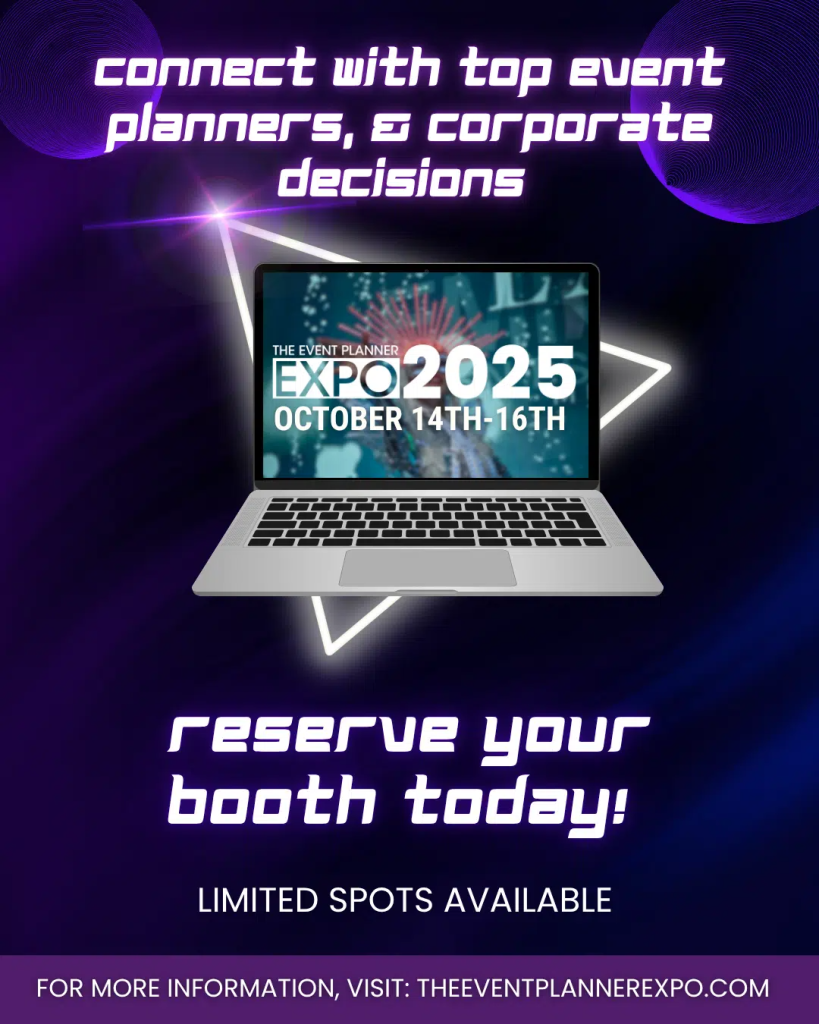If you’re still relying on newsletters to keep clients interested, it’s time to shift gears. Event marketing has evolved. You can’t just send another email and hope it lands at the right moment.
Today’s planners are competing in a faster, smarter world. Audiences expect personalization, instant answers, and proof that you can deliver. AI and data are the new baseline for running a marketing system that works while you plan, pitch, or produce an event.
Let’s unpack what data-driven marketing actually looks like, why it matters, and how you can make it part of your 2026 playbook.
Why this shift matters
Clients used to find planners through word-of-mouth and referrals. Those channels still help, but they don’t create predictable growth.
The event market is crowded. Corporate clients compare planners like they compare software. Wedding couples scroll through hundreds of options. Everyone wants a brand that feels like it “gets them.”
Data helps you do that. Instead of guessing what someone wants, you can see patterns in behavior. You learn when they’re ready to book, what kind of events they host, and how they interact with your brand.
AI takes it one step further. It organizes the chaos. It can help you identify hot leads, recommend what message to send, and even predict which offers are most likely to convert.
When you use both, your marketing starts to feel more natural and less like shouting into the void.
What data-driven marketing looks like for planners
Think of your marketing as a cycle. Data feeds it. AI powers it. You guide it.
Here’s how the pieces fit together.
Collect the right data
Start by tracking what matters. Every inquiry should give you a few useful details. Name. Event type. Budget range. Date.
Then watch how people interact with your site and content. Which pages do they visit? What form did they fill out? Did they click on your video tour or your pricing page?
This tells you what they care about most. Over time, you’ll notice patterns. Maybe corporate clients click on case studies while couples linger on photos.
That’s insight you can act on.
Use automation to stay responsive
When someone fills out a form, your response speed matters. The sooner you follow up with an email, the higher your chance of converting them.
Set up automatic replies that still sound human. Thank them for reaching out. Give them a quick next step, like a calendar link or a “see how we work” video.
If they don’t respond, follow up in a few days with a friendly nudge. Maybe a new example or testimonial that fits their event type.
Automation handles the timing so you can focus on the creative work.
Personalize your outreach
Generic messages are easy to ignore. Data lets you talk to people like you already know them.
If someone downloads a “Corporate Holiday Party Guide,” your next message shouldn’t promote wedding packages. It should show an example of how you pulled off a 500-person gala with zero stress for the client.
Little touches like that make people feel seen. It’s not about technology taking over your marketing. It’s about using it to make your communication smarter.
What this means in practice
Let’s say you run a corporate event production firm. You launch a simple guide called “How to Make 2026 Events Feel Fresh Again.”
Every time someone downloads it, you collect a few key details. Company size. Event type. Timeline.
AI tools analyze that data and tell you who’s most likely to book soon. Your system automatically sends a follow-up email with a short success story and a link to schedule a call.
That’s data-driven marketing in action. It runs in the background but feels completely personal on the surface.
The benefits you’ll notice
You save time. You won’t have to follow up with every lead manually.
Your conversion rate improves. You’re sending the right message to the right person at the right time.
Clients feel seen. They get messages that fit their goals instead of generic promotions.
You can scale without burnout. Automation keeps the engine running while you focus on the creative and operational parts of your business.
You make smarter decisions. Data shows what’s actually working, so you can spend your energy on high-return tactics.
Building your system step by step
Start small. Don’t try to automate everything at once. Pick one area of your marketing where you can use data to make better choices.
Get organized (Do this first)
Audit what you already collect. Check your inquiry forms, CRM, and email list. Make sure every contact record includes at least a few helpful details, like event type and timing.
Create a simple workflow (Do this second)
Build one automation. For example, when someone downloads a guide, send an instant thank-you email. Wait three days, then send a second message with a related video or testimonial.
Keep testing until the sequence feels natural.
Track what happens (Do this during)
Watch how many people open your emails, book a call, or click through your site. Over time, patterns will appear. You’ll start to see what kinds of leads move faster and what kinds drop off.
Refine your offers (Do this always)
If a certain audience keeps engaging, tailor new offers for them. Maybe it’s an exclusive venue list or a behind-the-scenes tour video. Use their behavior to guide your marketing instead of guessing.
How AI can actually help
AI doesn’t have to be complicated. Start with tools that support what you already do.
- Email platforms that suggest subject lines or track engagement.
- CRMs that predict which leads are ready to book.
- Chatbots that answer basic questions while you’re in meetings.
- Ad platforms that adjust targeting based on real-time performance.
The goal isn’t to hand your marketing over to a robot. It’s to let AI handle repetitive tasks so you can spend more time designing, pitching, and connecting with clients.
By the way, have you tried “Mia” yet on The Event Planner Expo website? It’s pretty cool.

Common mistakes to avoid
Don’t collect data you’ll never use. Start small and stay focused.
Don’t automate so much that you lose your voice. Clients should still feel you in every interaction.
And don’t treat AI as a quick fix. It’s only as good as the strategy behind it.
When your tools are set up to serve a clear plan, they amplify your effort instead of adding confusion.
What success looks like
A year from now, your marketing could look completely different.
You’ll know where your best leads come from. You’ll respond to inquiries instantly. You’ll send messages that match your audience perfectly.
And your data will tell you, in black and white, what’s paying off. That’s when you know you’ve moved beyond “just an email.”
Looking ahead to 2026
The event industry is changing faster than ever. AI isn’t a trend anymore—it’s infrastructure. The planners who embrace it early will attract better clients, build smoother operations, and stay visible, while others fall behind.
Start simple. Collect better data. Automate the basics. Learn from the results. Each step makes your marketing more powerful and your business more predictable.
Learn what’s next
If you want to see how the best planners are using AI to grow their reach and revenue, join us at The Event Planner Expo 2026. You’ll meet industry experts, see live demos, and walk away with strategies you can use right away.
Start building a marketing engine that feels modern, personal, and effortless.






